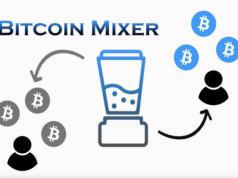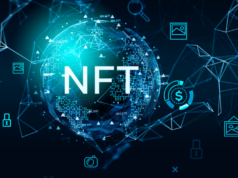What Is Bitcoin Mining? Bitcoin (BTC) was the first decentralized cryptocurrency in the world. Satoshi Nakamoto, whose actual identity has yet to be proven, founded it in 2009. It builds on Nakamoto’s white paper, ‘Bitcoin: A Peer-to-Peer Electronic Cash System,” which was released on October 31, 2008.
On the exchange market, Bitcoin was worth $43,394.80 as of late March 2022. This figure indicates that the coin is doing well. The Bitcoin currency has risen in popularity over the years to the point that its value is comparable to that of gold. The future seems bright for Bitcoin Mining and aficionados, and it’s a potentially profitable venture for anybody who wants to give it a shot.
Bitcoin uses peer-to-peer technology to let people send and receive payments without a central authority. People who contribute processing power to the Bitcoin Mining network, who are often called “miners,” are paid in Bitcoin through incentives and transaction fees. The smallest unit is known as a satoshi, and one bitcoin is divisible by eight decimal places.
However, let us first spend some time learning the fundamentals of Bitcoin mining:
- As more transactions happen on the network, they are added to the blockchain ledger.
- Transactions in the blockchain network are organized into blocks, which are then linked together to form a chain of blocks, hence the name blockchain.
- Using timestamps and hash algorithms, blockchain transactions are kept in order of when they happened.
- Because of this, records recorded on the blockchain are permanent and unchangeable.
Bitcoin Miners may Obtain Bitcoins in Three different ways.
They are as follows:
- Buying bitcoins on the open market.
- Accepting bitcoin as a form of payment for products and services.
- Creating fresh bitcoins.
Bitcoin mining is the most fascinating of these three options since it takes miners on a journey of discovery. Bitcoin mining can be fairly demanding since it necessitates the use of extremely powerful processing resources to solve complicated mathematical equations in order to validate payments and add them to the blockchain record.
What Is Bitcoin Mining?
- Bitcoin mining is the process of validating new transactions against the Bitcoin network, which leads to the creation of new bitcoins.
- Bitcoin mining is the process of digitally validating Bitcoin transactions on the Bitcoin blockchain and adding them to the blockchain record.
- To validate transactions on the blockchain, which are kept on the decentralized blockchain ledger, you have to solve complicated cryptographic hash problems.
To solve these issues, tremendous computational power and advanced equipment are required. Miners are paid with Bitcoin in exchange, which is subsequently released into circulation, thus the term “Bitcoin mining.”
What Is Blockchain?
As previously stated, blockchain is the technology that underpins bitcoin. Blockchain is a decentralized, open ledger that records transactions in chronological order. Any record or transaction stored on the blockchain could be edited or altered, ensuring transaction security. A block is the smallest part of a blockchain and functions as a container for all transaction details.
A block has four primary properties, or fields:
- Preceding hash: This characteristic retains the value of the previous block’s hash, which is how the blocks are connected together. This is the total number of transactions contained in this block—the total number of transactions mined, verified, and included in this block.
- A nonce is a random number used to modify the output of the hash value in a “proof of work” consensus mechanism, which Bitcoin employs.
- Every block is expected to generate a hash value, and the nonce appears to be the factor used to do so. The process of verification in a blockchain is known as proof of work.
- Hash: That’s the value acquired by running the prior hash value, the data, and the sequence number through the SHA-256 algorithm; it serves as the block’s digital signature.
Blockchain Ideas:
To understand bitcoin mining, you must first grasp the three primary blockchain ideas.
- A public distributed ledger is a history of all transactions kept on the blockchain network throughout the world. Transactions are validated on the network by bitcoin users.
- The blockchain prohibits unwanted access by employing a hash algorithm known as SHA-256 to assure the security of the blocks. They have been digitally autographed. Once produced, their hash value can not be changed. SHA-256 accepts any length of the input string and provides a fixed 256-bit output. It’s a one-way function, so you can’t fully get the opposite of what you put in by looking at what you got out.
- Proof of work: In blockchain mining, miners have to solve a hard math problem called “proof of work” to confirm transactions. To do so, the miner’s primary goal is to find the nonce value, which is the mathematical problem that miners must solve in order to create a hash that is smaller than the network’s aim for a certain block.
Bitcoin Mining Profitability:
Bitcoin Profit is a crypto robot that helps you trade Bitcoins and other cryptocurrencies in a profitable way. It uses an algorithm based on artificial intelligence (AI) to find trades on the cryptocurrency market, and it can close and open your transaction instantly, saving you time and letting you trade without having to do anything by hand. It claims that in a normal market, approximately 85 percent of the transactions it executes are profitable.
However, technical understanding is necessary to assess the profit made by the Bitcoin mining process. The actual Bitcoin profit “the actual money made” is determined by the cost of the AISC gear, power usage, and the performance of the mining software.
In recent years, Bitcoin mining has made less money than it did in the past. This is because electricity costs have gone up, technology has gotten more expensive, mining has become harder because of more competition, and the price of Bitcoin has gone down. Reportedly, Bitcoin mining was started with CPUs and simple algorithms, making it profitable and less expensive.
How Bitcoin Mining Works: POW (Public Distributed Network), 64-Digit Hexadecimal Number (SHA-256 Algorithm)
Blockchain is a peer-to-peer system that has been praised for being very safe, open, and trustworthy. This is because entries in the blockchain network are safeguarded using timestamps and cryptographic functions in such a manner that altering the transactions after they have been entered into the ledger is nearly impossible and prohibitive. The absence of centralized control is at the heart of blockchain security.
Here’s an explanation of what happened during bitcoin mining.
Bitcoin Mining Requirments:
A bitcoin miner would first choose and set up their tricks of the trade.
These are some examples:
- GPU (graphics processing unit) hardware, SSD (for crypto mining), or ASIC (application-specific integrated circuit).
- Software for mining.
- A purse.
- Mining pool of choice (if one chooses the pool mining option instead of solo mining).
Once all of this is in place and the system is turned on, the mining process is automated. Any extra help from a person is needed if a system or network breaks down, the power goes out, or the system needs to be maintained.
Bitcoin Transaction Elements
Three components are involved when a transaction is launched in the bitcoin network:
- An input to a transaction.
- A transaction results.
- The transaction value.
A bitcoin mining program provides a new cryptography puzzle that is tough to decipher for each transaction input. The number of transactions necessary to construct a block is then grouped into a Merkle by the program.
The SHA-256 Algorithm and the Merkle Tree
A Merkel’s tree is a data structure that holds all of the hashes in a block and summarises all of the transactions in that block. SHA-256 is used to pair the hashes of each transaction, which are called transaction IDs, over and over again in the Merkle tree until only one hash defines the whole tree. Merkel’s root, or root hash, is the name given to this hash.
The Merkle tree allows for efficient transaction verification in the bitcoin network.
The Header of the Block
- The block header contains the Merkle root, which is the identity of a Merkle tree.
- The block header carries block information and comprises the following components:
- The bitcoin software’s version number
- The preceding block’s hash
- Merkle’s root (root hash)
- A cryptographic nonce with a timestamp
- The objective
Miners will use this information to solve the hash problem and add a block transaction.
How to Solve the Hash Puzzle
Miners must find the hash that is less than a certain goal by using the difficulty required to find the hash that is less than the goal. The target, which is kept in the header, is a 67-digit number that determines the mining difficulty depending on the number of miners trying to fix a hash function.
It is vital to remember that this difficulty changes after every 2016 block is generated based on how long miners took to solve an equation in the prior 2016 blocks. This also contributes to keeping the pace of transactions appending to the blockchain at 10 minutes.
Miners will try to solve the hash problem by adding a nonce to the block header over and over again until the hash value they get back is less than the target. When a mining machine solves the problem, a new block is made, and the Bitcoin network verifies it when all the nodes agree.
When a block is verified, the transactions it contains are validated, and the block is added to the chain. As previously stated, this occurs every 10 minutes. Because there will be multiple miners (systems) trying to solve the problem, the first miner to get the right hash value wins a Bitcoin prize. This technique enables the circulation of additional Bitcoins.
Mining and Bitcoin Circulation
The top supply restriction of 21 million bitcoins imposed by Satoshi Nakamoto, Bitcoin’s founder, is perplexing. Experts, on the other hand, consider it a tremendous advantage since the scarcity of supply promotes the value and a constant price for the oldest cryptocurrency.
More bitcoins have been created and distributed into circulation since the genesis. A bitcoin block was mined in 2009 with 50 bitcoins. Bitcoin mining makes sure that blocks of transactions are made and stacked in the right order so that they can be tracked and confirmed mathematically.
As a reward for making blocks, people get bitcoins, which means there are more bitcoins in circulation. The Bitcoin architecture was cleverly made so that every 10 minutes, a block is found and a certain number of bitcoins are given as a reward.
What if someone tries to hack into the data?
As the name indicates, a blockchain is a chain of blocks—call them A, B, and C. Every block has solved a challenge and created its own hash value, which serves as its identifier. Assume someone tries to tamper with block B and alter the data.
Because the data in the block is aggregated, if the data in the block changes, the hash value that serves as the block’s digital signature will likewise change. As a result, the chain following it will be corrupted—the blocks before block B will be delinked since the prior hash of block C will no longer be valid.
Also Check, Crypto Crash: Right Time To Buy The Dip?












